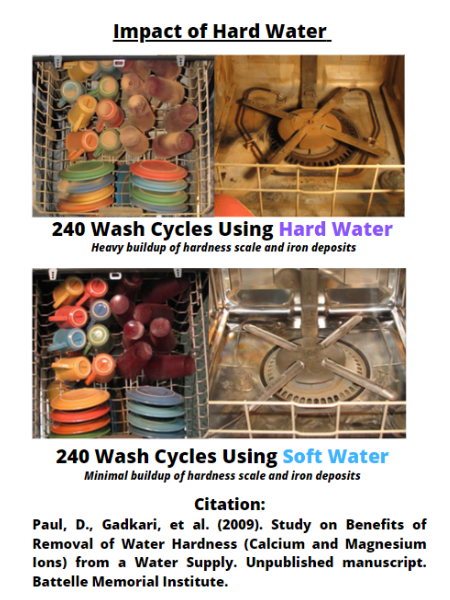The term "hard water" refers to water that contains high levels of dissolved minerals - primarily calcium and magnesium. Hard water is not considered a health concern, but it is a nuisance that can be controlled. WQRF's research highlights the impacts that hard water can cause on the entire home, and savings that can be realized by softening hard water supplies.

Common costly symptoms of hard water, also referred to as hardness, include:
- Scale deposits from hardness build-up in pipes, faucets, coffee machines, water heaters, and other water-using appliances and fixtures
- Spotting and/or scale deposits on dishes and glassware
- Increased soap usage needed to properly clean dishes and laundry
- High energy costs associated with scale build-up in water-using appliances
Hardness is typically treated for the whole house or building, rather than just at a specific faucet. The most common form of treatment is softening via cation exchange technologies - better known as water softeners. It is the only technology with NSF/ANSI product certification to reduce hardness in water.
Use WQRF's calculator to explore the many benefits of softening a hard water supply.
- If you have already tested your water quality, your hardness levels may have been reported as "grains per gallon" or "parts per million (ppm)" of calcium carbonate. Plug your hardness level into the tool to determine your potential savings in detergent and energy usages.
- If you are unsure whether your water supply is hard, but are experiencing any of the common symptoms of hard water, the tool will automatically select an estimated hardness level based off data from your geographical area. Please note that at this time, data is only available for select states.
